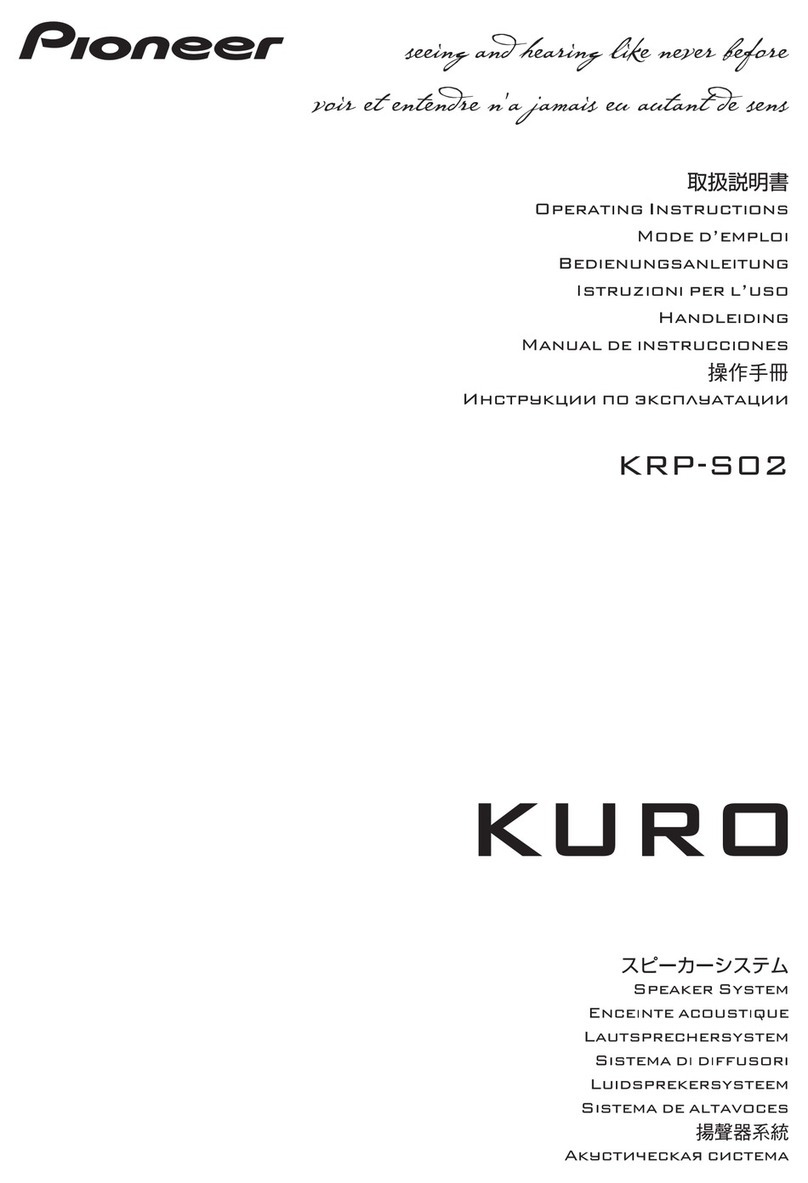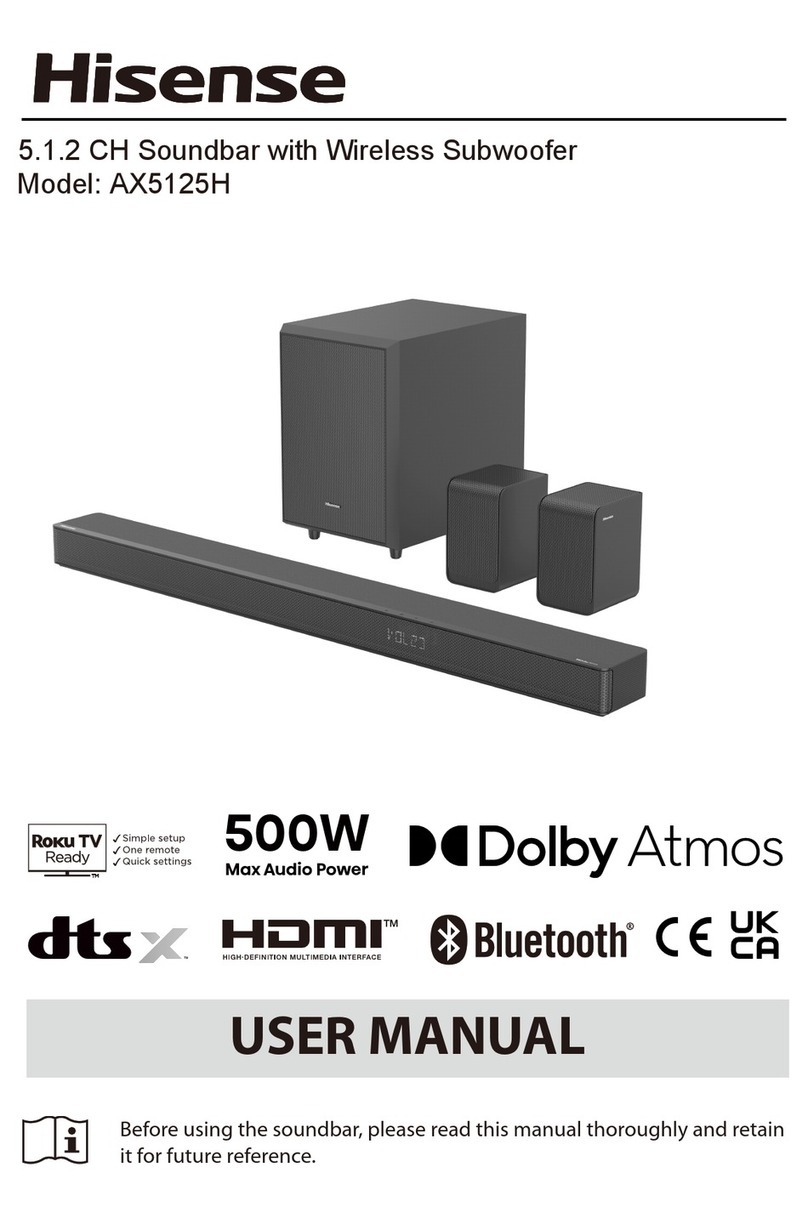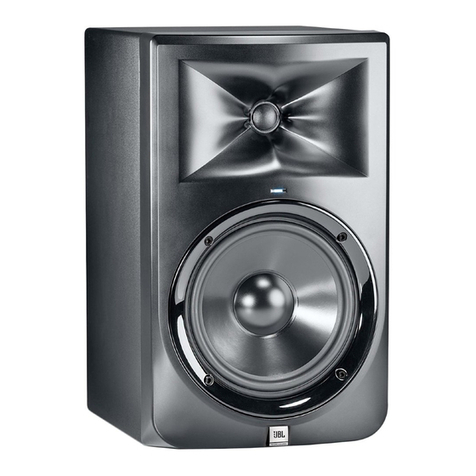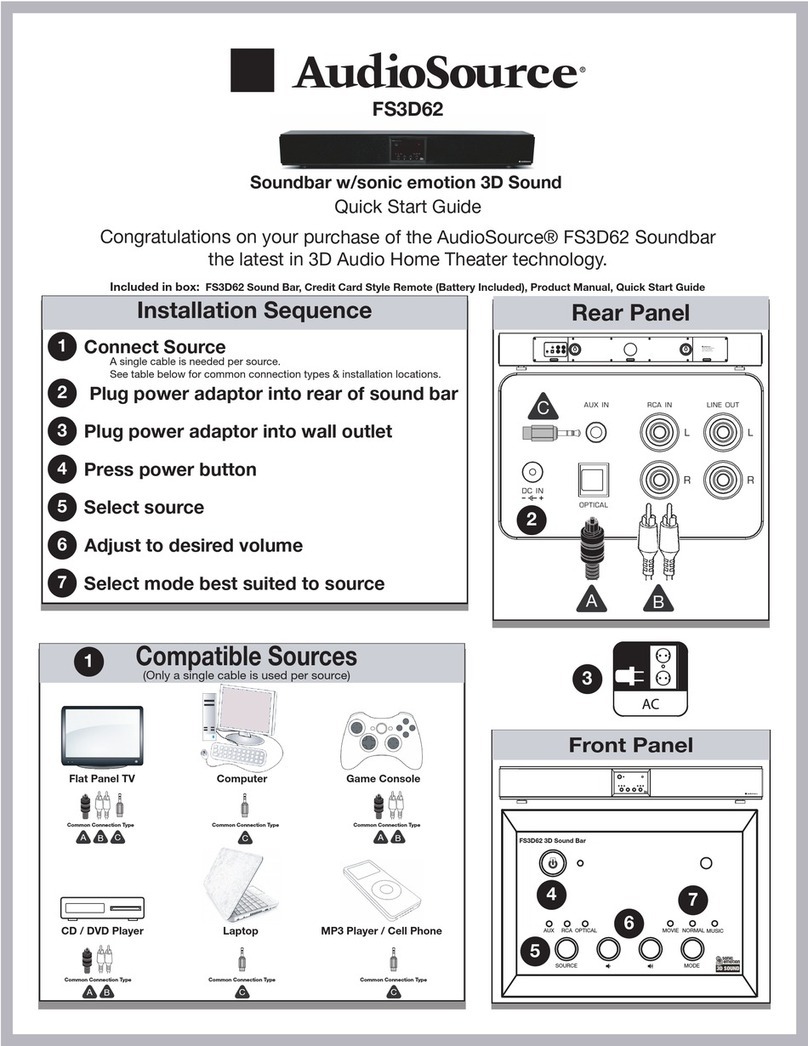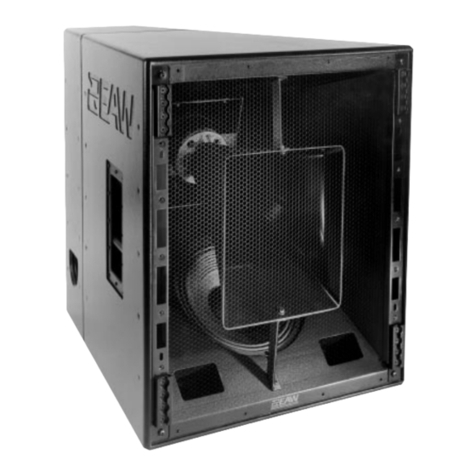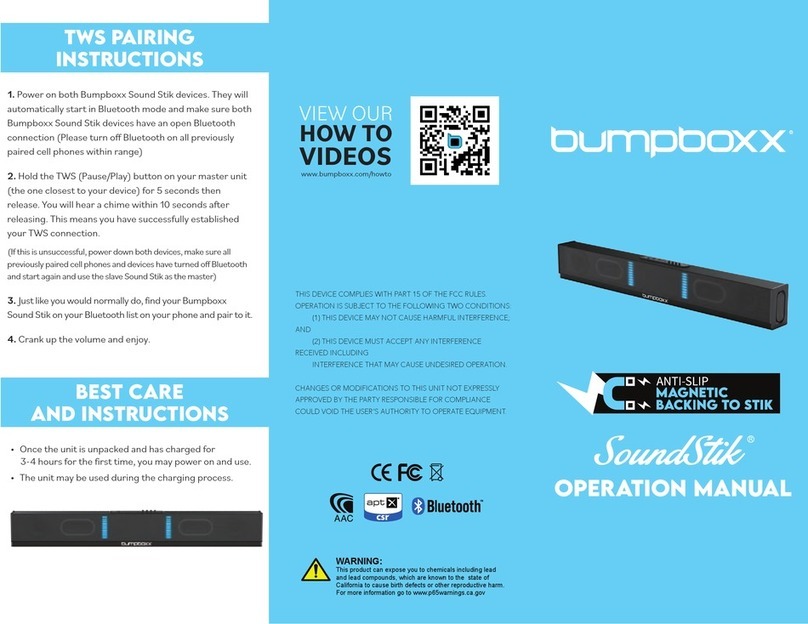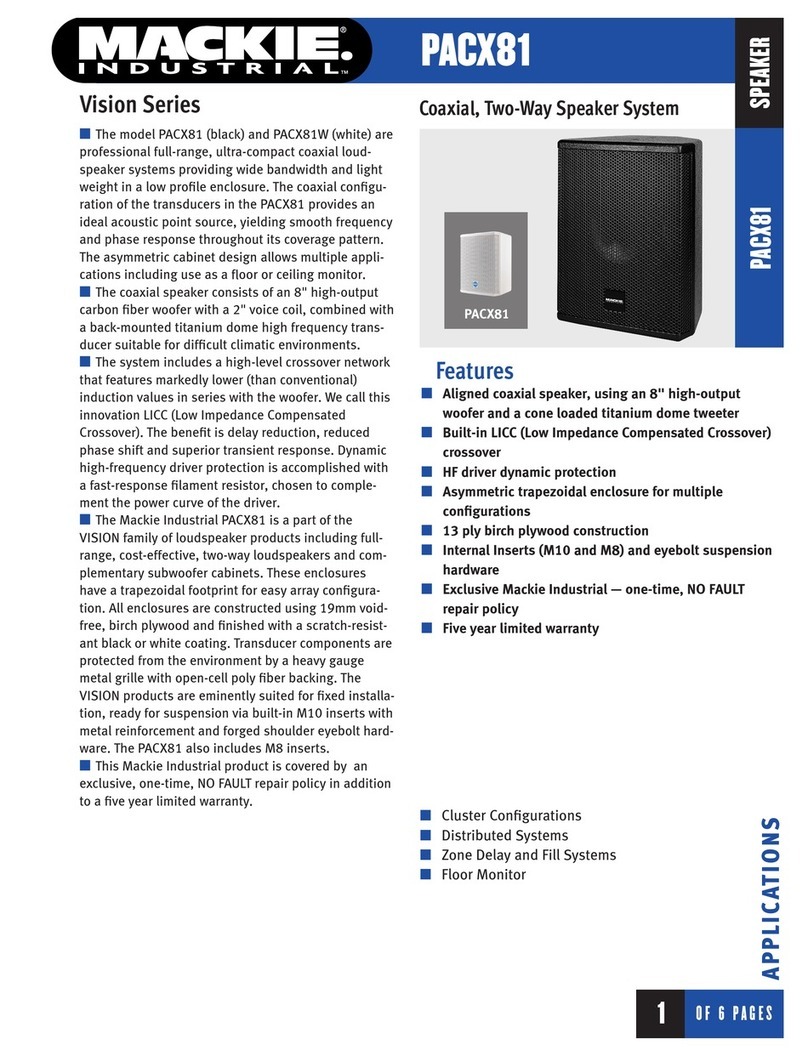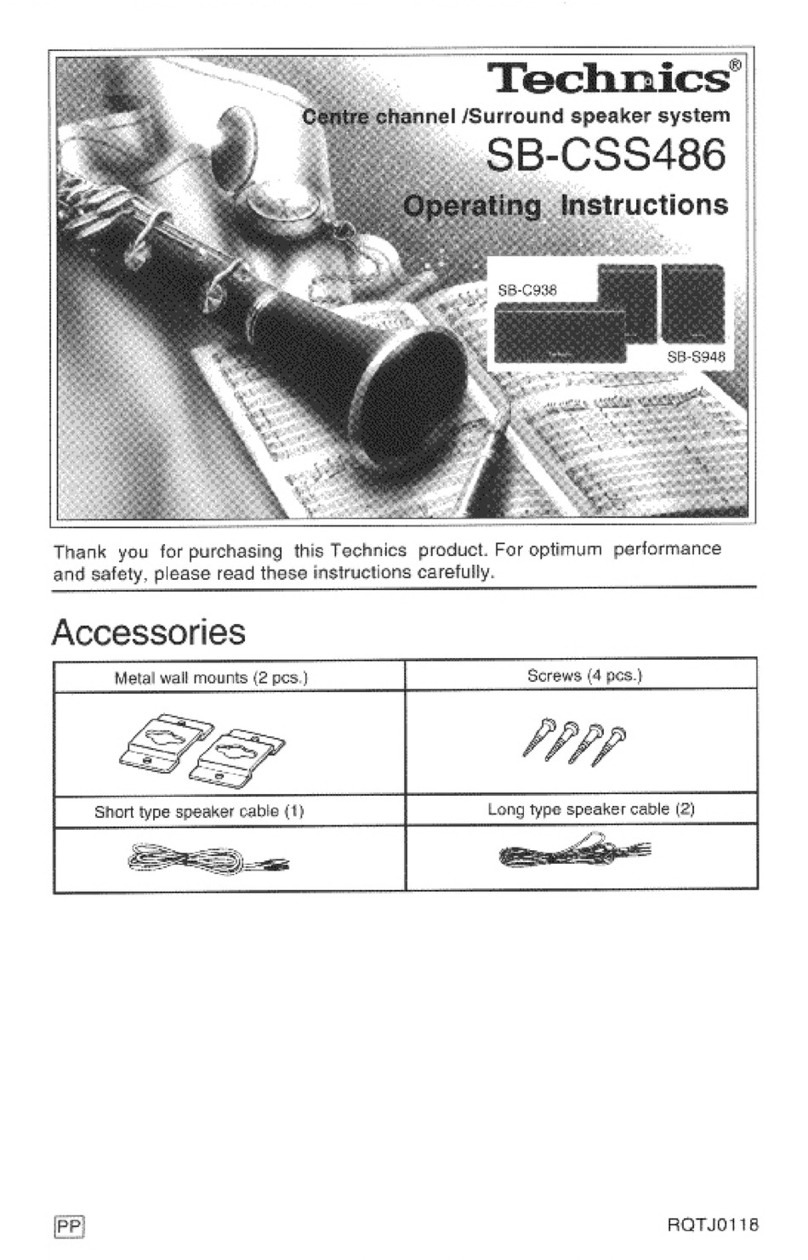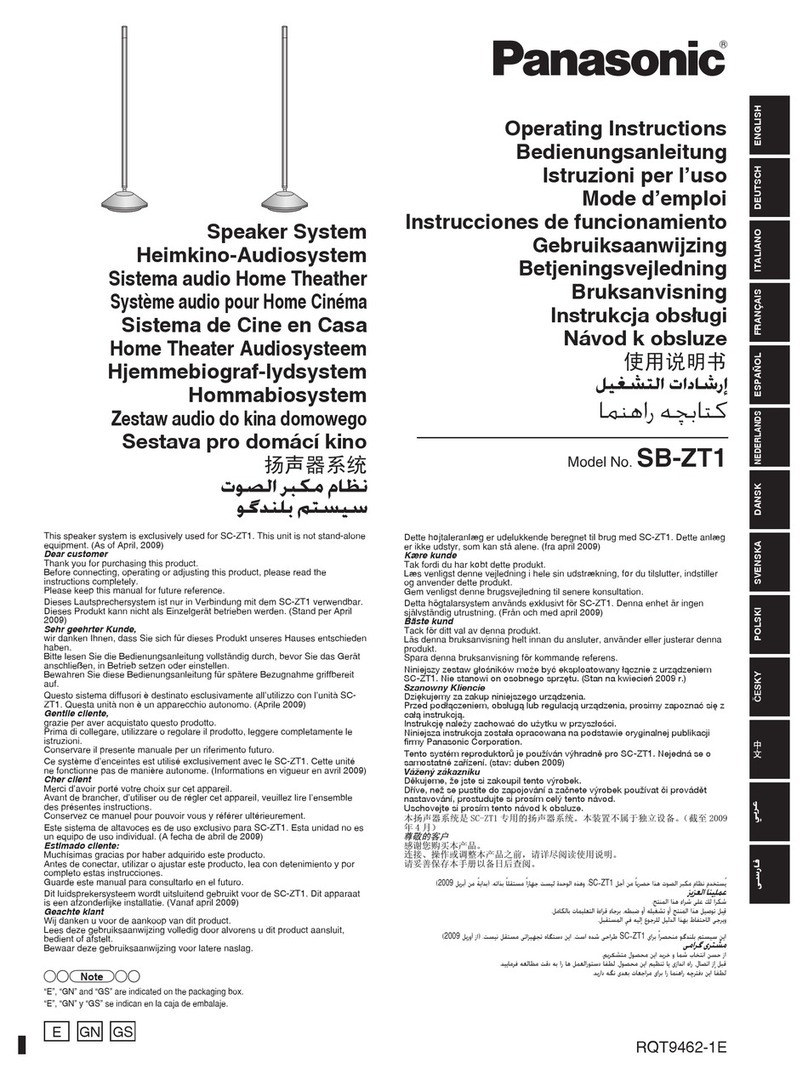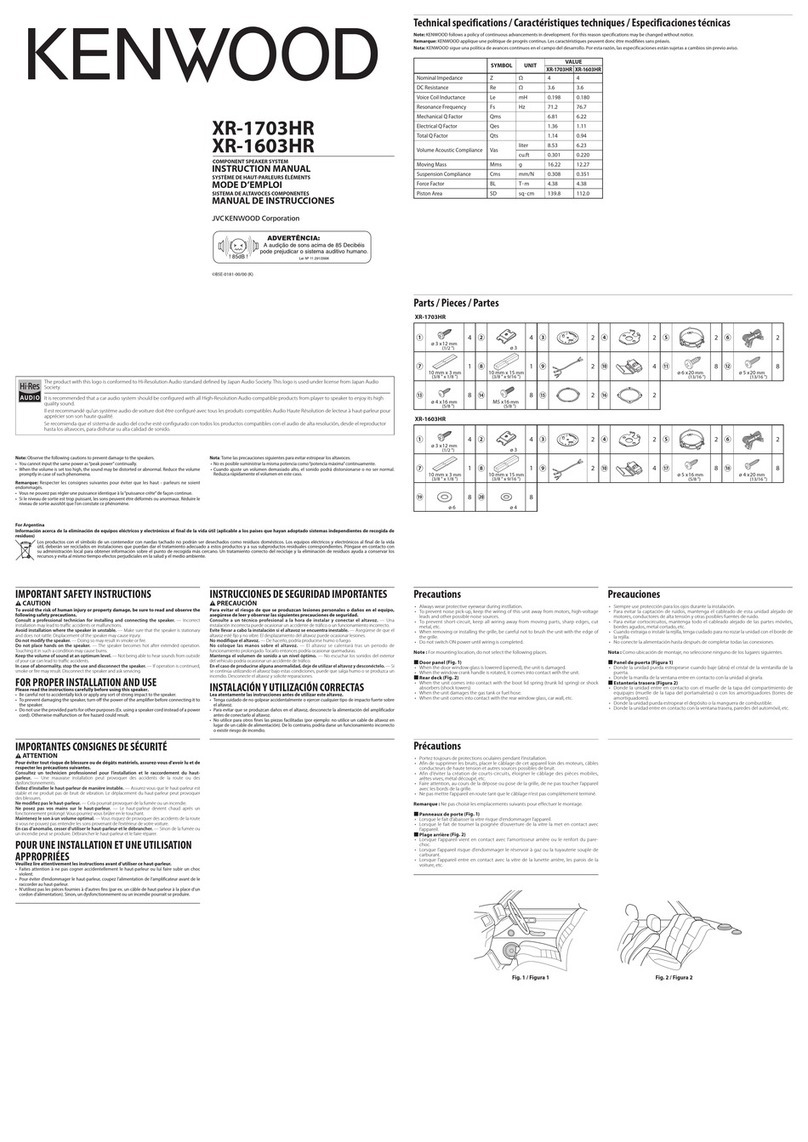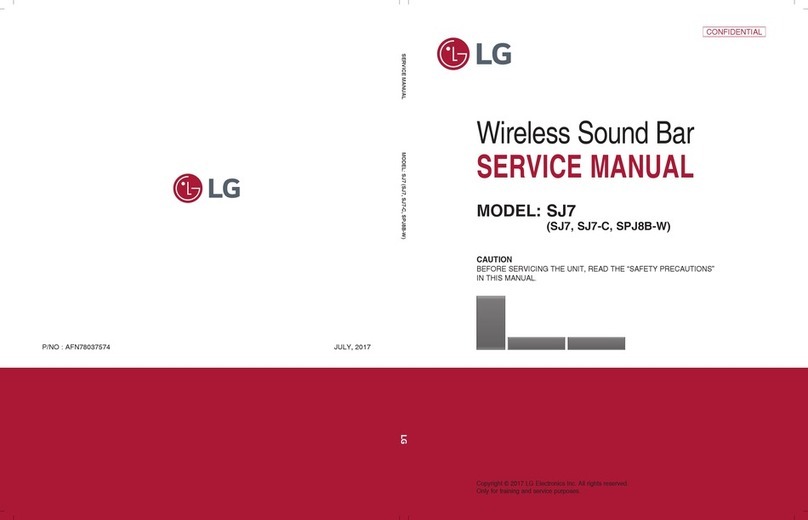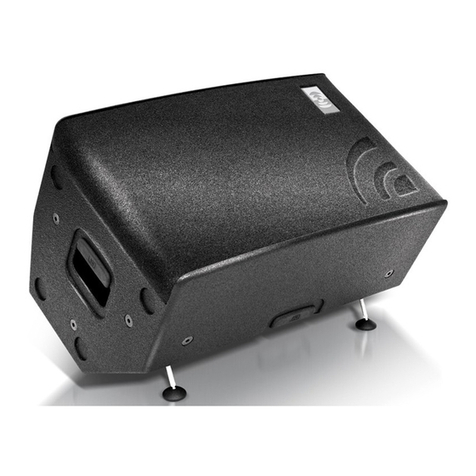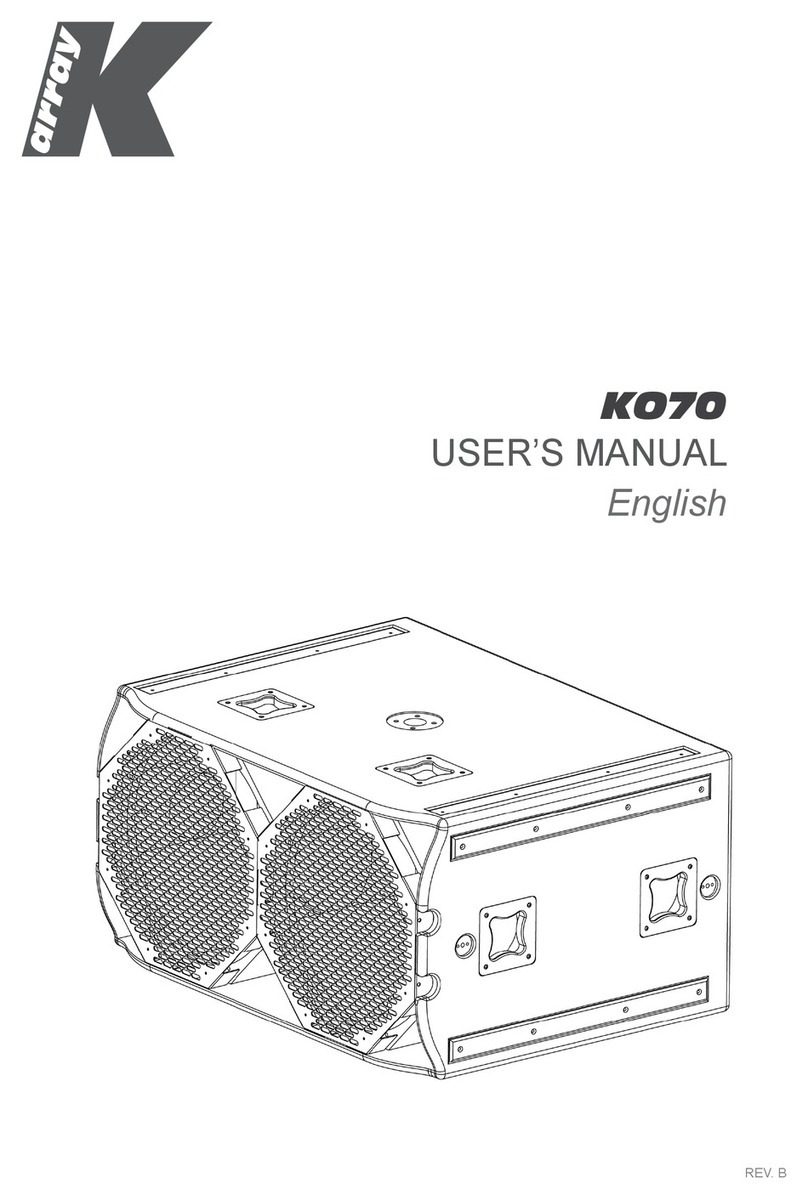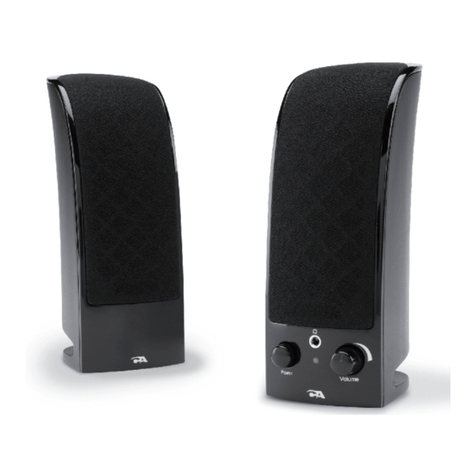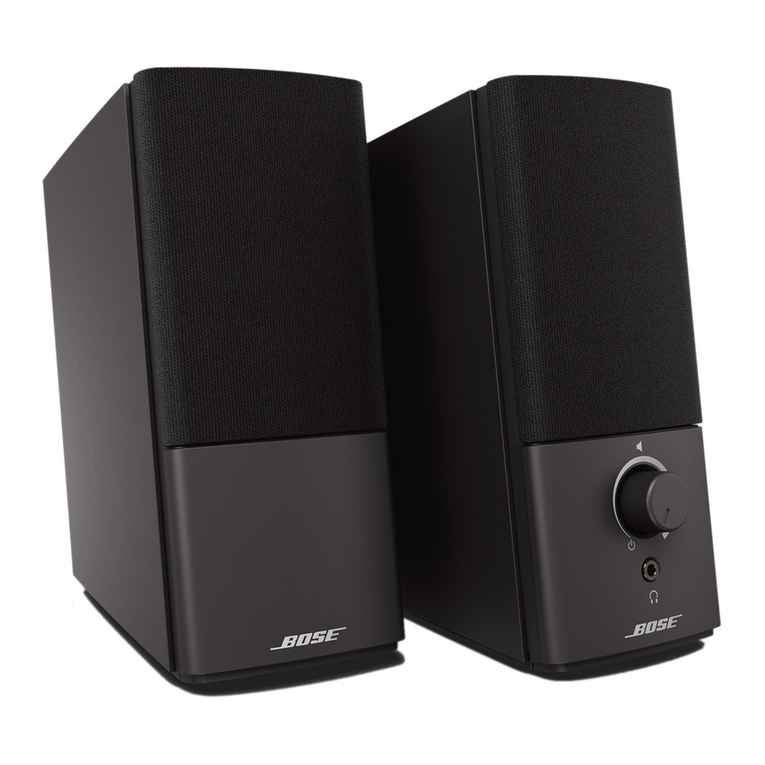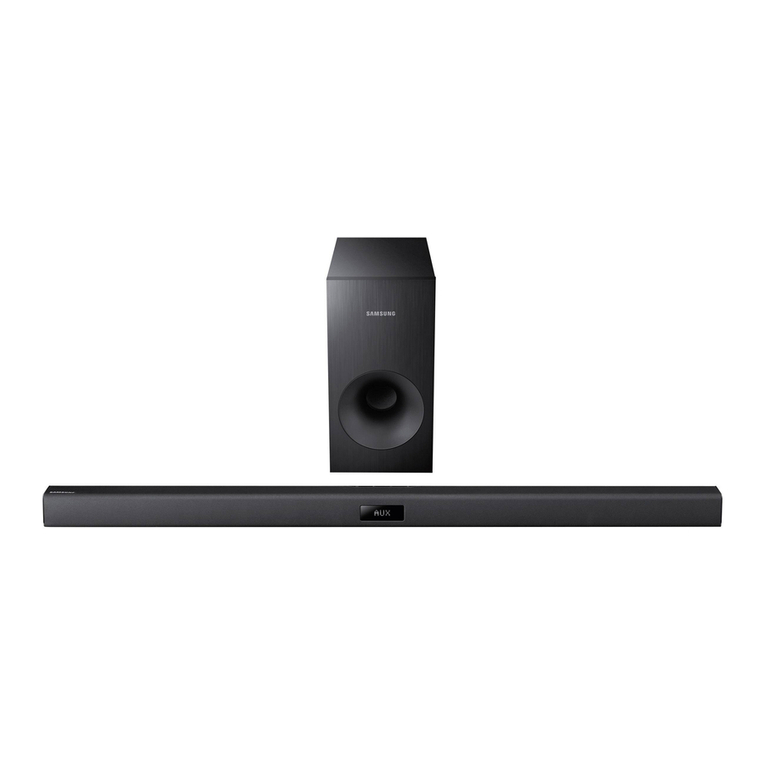SonoSite MicroMaxx User manual

MicroMaxx™
Ultrasound System
Service Manual

ii
SonoSite, Inc.
21919 30th Drive SE
Bothell, WA 98021-3904
USA
Telephone: 1-888-482-9449 or 1-425-951-1200
Fax: 1-425-951-1201
SonoSite Ltd
Alexander House
40A Wilbury Way
Hitchin, Herts
SG4 OAP UK
T: +44-1462-444800
F: +44-1462-444801
“MicroMaxx,” “TITAN,” a n d “ SonoSite TITAN” are trademarks of SonoSite, Inc.
Non-SonoSite product names may be trademarks or registered trademarks of their respective owners.
SonoSite products may be covered by one or more of the following U.S. patents: 4454884, 4462408, 4469106, 4474184, 4475376, 4515017, 4534357,
4542653, 4543960, 4552607, 4561807, 4566035, 4567895, 4581636, 4591355, 4603702, 4607642, 4644795, 4670339, 4773140, 4817618, 4883059,
4887306, 5016641, 5050610, 5095910, 5099847, 5123415, 5158088, 5197477, 5207225, 5215094, 5226420, 5226422, 5233994, 5255682, 5275167,
5287753, 5305756, 5353354, 5365929, 5381795, 5386830, 5390674, 5402793, 5,423,220, 5438994, 5450851, 5456257, 5471989, 5471990, 5474073,
5476097, 5479930, 5482045, 5482047, 5485842, 5492134, 5517994, 5529070, 5546946, 5555887, 5603323, 5606972, 5617863, 5634465, 5634466,
5636631, 5645066, 5648942, 5669385, 5706819, 5715823, 5718229, 5720291, 5722412, 5752517, 5762067, 5782769, 5800356, 5817024, 5833613,
5846200, 5860924, 5893363, 5916168, 5951478, 6036643, 6102863, 6104126, 6113547, 6117085, 6142946, 6203498 B1, 6371918, 6135961, 6364839,
6383139, 6416475, 6447451, 6471651, 6569101, 6575908, 6604630, 6648826, 6835177, D0280762, D0285484, D0286325, D0300241, D0306343,
D0328095, D0369307, D0379231, D456509, D461895, 10/682699, 10/407682. Other patents pending.
P05324-01 08/2005
Copyright 2005 by SonoSite, Inc.
All rights reserved.
Caution: Federal (United States) law restricts this device to sale by or on the order of a physician.

iii
Contents
Chapter 1: Introduction
Audience ........................................................................................................................... 1
Conventions Used in This Service Manual ............................................................ 1
Product Upgrades and Updates ............................................................................... 1
Customer Comments ................................................................................................... 1
About the System .......................................................................................................... 2
About the System Software ....................................................................................... 3
Software Licensing ........................................................................................................ 3
Chapter 2: Safety
Electrical Safety ..............................................................................................................5
Equipment Safety .......................................................................................................... 6
Battery Safety .................................................................................................................. 7
Biological Safety ............................................................................................................. 8
Labeling Symbols .......................................................................................................... 8
Chapter 3: System Overview
System Overview ........................................................................................................... 9
Theory of Operation ...................................................................................................10
Description of Operating Modes ..................................................................11
Velocity Color Doppler (VCD) ........................................................................14
Additional System Feature Performances .................................................15
ECG Module ..........................................................................................................16
DICOM ....................................................................................................................17
IMT ...........................................................................................................................17
System Specifications ................................................................................................17
System Dimensions ...........................................................................................17
Display Dimensions ...........................................................................................17
Transducers ..........................................................................................................17
Imaging Modes ...................................................................................................18
Image Storage .....................................................................................................18
Accessories ...........................................................................................................18
Peripherals ............................................................................................................19
Temperature, Pressure, and Humidity Limits ...........................................19
Electrical ................................................................................................................19
Battery ....................................................................................................................19
Electromechanical Safety Standards ...........................................................20
EMC Standards Classification .........................................................................20
Airborne Equipment Standards ....................................................................20
DICOM Standard .................................................................................................20
HIPAA Standard ...................................................................................................20
Chapter 4: Setup and Operation
System Controls ...........................................................................................................21
System Components ..................................................................................................23
Setup ................................................................................................................................23
Setup Security Settings ....................................................................................24
Audio and Battery ..............................................................................................28
Connectivity .........................................................................................................29
Date and Time .....................................................................................................30
Delta Key and F Keys .........................................................................................31
Display Information ...........................................................................................31
IMT Calculations ..................................................................................................32

iv
OB Calculations Authors ..................................................................................33
OB Custom Measurements .............................................................................34
OB Custom Tables ..............................................................................................35
Presets ....................................................................................................................36
System Information ...........................................................................................37
Touchpad ........................................................................................................................38
Accessories .....................................................................................................................38
Preparing the System for Operation .....................................................................38
Installing and Removing the Battery ..........................................................38
Installing and Removing the CompactFlash Card ..................................39
Using AC Power/Charging Battery ...............................................................40
Connecting and Removing the Transducer ..............................................41
Turning System On/Off ....................................................................................41
Upgrading the System and Transducer Software ............................................42
Upgrading Triple Transducer Connect (TTC) ............................................46
Obtaining a License Key ..................................................................................46
Installing a License Key ....................................................................................47
To Display the System Information Screen ...............................................48
To Display the License Update Screen ........................................................48
Chapter 5: Cleaning and Disinfecting
Universal Precautions ................................................................................................49
Receipt of Suspected Contaminated Materials ................................................49
Recommended Disinfectants ..................................................................................49
Chapter 6: Troubleshooting
Basic Troubleshooting ...............................................................................................51
Periodic Maintenance ................................................................................................52
System and Subsystem Diagnosis .........................................................................52
System Repair ...............................................................................................................52
Test Equipment ............................................................................................................53
Failure (Assert) Codes .................................................................................................53
Verifying a System Assert Code .....................................................................53
Troubleshooting Flow Diagrams ............................................................................54
Display ....................................................................................................................54
Control Panel .......................................................................................................55
System ....................................................................................................................56
Battery ....................................................................................................................57
DICOM ....................................................................................................................58
Chapter 7: Replacement Procedures
Display Replacement .................................................................................................59
Required Parts .....................................................................................................59
Required Tools .....................................................................................................59
Display Removal .................................................................................................59
Display Replacement ........................................................................................61
Test the Display ...................................................................................................62
Control Panel Subassembly Replacement ..........................................................62
Required Parts .....................................................................................................62
Required Tools .....................................................................................................62
Control Panel Removal .....................................................................................62
Control Panel Replacement ............................................................................62
Main System Disassembly for Repair and/or Replacement .........................63
Required Parts .....................................................................................................63
Required Tools .....................................................................................................63
Main PCBA Removal ..........................................................................................63

v
Chapter 8: Performance Testing
Overview ........................................................................................................................69
Test Equipment ............................................................................................................69
Setting Up Performance Tests ................................................................................69
Scan Reference Orientation ............................................................................69
Testing 2D Performance ............................................................................................70
2D Image Quality ................................................................................................70
Axial Measurement Accuracy ........................................................................70
Lateral Measurement Accuracy .....................................................................71
Penetration ...........................................................................................................71
Additional Performance Tests .................................................................................72
CPD ..........................................................................................................................72
M Mode Imaging ................................................................................................72
Tissue Harmonic Imaging ................................................................................72
Pulsed Wave (PW) Doppler Imaging ...........................................................73
Image Quality Verification Test/Livescan ...................................................73
Image Review ......................................................................................................73
Printer .....................................................................................................................73
Battery Charging ................................................................................................73
Video Output .......................................................................................................74
Returning Products to SonoSite .............................................................................74
Contacting SonoSite Technical Support ....................................................74
Shipping Instructions .......................................................................................74
Appendix A: Parts List
Replacement Parts List ..............................................................................................75
Display ....................................................................................................................75
Control Panel .......................................................................................................77
Replacement Parts, System ............................................................................78
Transducer Nest Frame Assembly ................................................................84
Ordering Replacement Parts ...................................................................................84
Appendix B: Service Event Report
Index ........................................................................................................................ 89

vi

Chapter 1: Introduction 1
Chapter 1: Introduction
Before servicing the MicroMaxx ultrasound system, please read the information in this manual. This text applies
only to the SonoSite MicroMaxx ultrasound system product manufactured after June 1, 2005. Please find service
information about products manufactured before June 1, 2005 in C1.51 Ultrasound System Service Manual (P00715),
C1.75 Ultrasound System Service Manual (P01118), C1.9 PLUS Ultrasound System Service Manual (P02287), C1.99 PLUS
and ELITE Ultrasound System Service Manual (P02913), and TITAN Ultrasound System Service Manual (P03309).
Audience
The intended audience of this manual is properly trained field and in-house service personnel.
Conventions Used in This Service Manual
These conventions are used in this service manual:
•AWARNING describes precautions necessary to prevent injury or loss of life.
•ACaution describes precautions necessary to protect the products.
• When the steps in the operating instructions must be performed in a specific order, the steps are numbered.
• Bulleted lists present information in list format, but they do not imply a sequence.
• The system handle is on the front of the system, and the battery compartment is on the back of the system.
Product Upgrades and Updates
SonoSite may offer software upgrades and new features that may improve system performance. Service manual
updates, explaining the effects of upgrades and new features on system performance, will accompany the
upgrades.
Customer Comments
Questions and comments are encouraged. SonoSite is interested in your feedback regarding the service manual.
Please call SonoSite at 1-877-657-8118. If you are outside the USA, call the nearest SonoSite representative. You
can also send electronic mail (e-mail) to SonoSite at the following address:

2Chapter 1: Introduction
About the System
The ultrasound system has multiple configurations and feature sets. All are described in this service manual but
not every option may apply to your system. System features are dependent on your system configuration,
transducer, and exam type.
Figure 1.1 MicroMaxx System Front View
Figure 1.2 MicroMaxx System Rear View
Table 1.1: MicroMaxx System Front Features
Number Feature
1 Control panel
2Handle
3Display
4 CompactFlash® slots (front for image storage, back for system and transducers updates,
import/export OB tables, user names/passwords, and DICOM configurations)
Table 1.2: MicroMaxx System Rear Connectors
Number Feature
1 DC input connector
2 I/O connector
3Battery
4ECGconnector
4
3
2
1
1
3 42

Chapter 1: Introduction 3
The system is a portable, software-controlled, ultrasound system using all-digital architecture. The system is used
to acquire and display high-resolution, real-time ultrasound images: 2D, color power Doppler (CPD), Color Doppler
(Color), Tissue Harmonic Imaging (THI), M Mode, pulsed wave (PW) Doppler, and continuous wave (CW) Doppler.
The system has a cine buffer, pan zoom, labeling, biopsy, measurements, calculations, a connection for image
transfer, image and clip storage, image review, printing, recording, the ability to archive Doppler with audio output
to a videotape, and DICOM connectivity.
Currently, the system supports the following broadband transducers:
• C60e/5-2 MHz 60 mm curved array
• HFL38/13-6 MHz 25 mm linear array
• ICT/8-5 MHz 11 mm intracavitary array
• L38e/10-5 MHz 38 mm linear array
• P17/5-1 MHz 17 mm phased array
• TEE/8-3 MHz phased array
System accessories include the following: mobile docking system (MDS), MDS Lite, mini-dock, Triple Transducer
Connect, a power supply, a battery, ECG cable, video and printer cables, and SiteLink Image Manager 3.0 software.
See the applicable SonoSite accessory user guide for information on the accessories.
System peripherals include medical grade (conforming to the requirements of EN60601-1) and non-medical
(commercial) grade products. System medical grade peripherals include a printer, VCR, and DVD. System
non-medical grade peripherals include a CompactFlash card and a Kensington Security Cable. System setup
instructions for the use of peripherals are covered in the MicroMaxx Ultrasound System User Guide.
Manufacturer’s instructions accompany each peripheral. Instructions for the use of peripherals with the system are
covered in the applicable SonoSite accessory user guide.
About the System Software
The ultrasound system contains software that controls its operation. A software upgrade may be required for new
feature releases. Should an upgrade be required, SonoSite will provide you with a CompactFlash card containing
the software. A single CompactFlash card can be used to update one or more systems. Software upgrades use the
back CompactFlash slot on the right hand side of the system. CompactFlash cards installed in the front
CompactFlash slot do not upgrade the system.
Software Licensing
SonoSite software is controlled by a license key, which is obtained from SonoSite or from its authorized
representatives. You must obtain one key for each system or transducer that will use the new software. See
“Obtaining a License Key” on page 46.
The software may be installed and will operate for a short period of time without requiring a valid license key. We
refer to this period of time as the “grace period.” The grace period is variable.
When you first install your software, your SonoSite system prompts you for a license key. If you have not yet
obtained a valid license key, you can elect to use the software as long as the grace period time has not been fully
consumed.
When a system is running in the grace period, all system functions are available. As you use the system, the grace
period is slowly consumed. When the grace period has expired, the system will not be usable until a valid license
key has been entered. Grace period time is not consumed while the system is powered off or when it is in “sleep”
mode. Whenever a system is running in the grace period, the grace period time remaining is available on the
license update screen.
Caution: When the grace period expires, all system functions except for licensing are unavailable until a
valid license key is entered into the system.

4Chapter 1: Introduction

Chapter 2: Safety 5
Chapter 2: Safety
Read this information before using the ultrasound system. The information in this manual applies to the
ultrasound system, transducer, accessories, and peripherals. This chapter contains safety information.
A WARNING describes precautions necessary to prevent injury or loss of life.
A Caution describes precautions necessary to protect the products.
Electrical Safety
This system meets EN60601-1, Class I/internally-powered equipment requirements and Type BF isolated
patient-applied parts safety requirements.
This system complies with the applicable medical equipment requirements published in the Canadian Standards
Association (CSA), European Norm Harmonized Standards, and Underwriters Laboratories (UL) safety standards.
See the MicroMaxx Ultrasound System User Guide, Specifications chapter.
For maximum safety observe the following warnings and cautions.
WARNING: To avoid discomfort or minor risk of patient injury, keep hot surfaces away from the patient.
Under certain circumstances, the transducer connector and back of the display enclosure can
reach temperatures that exceed EN60601-1 limits for patient contact, therefore only the operator
shall handle the system. This does not include the transducer face.
To avoid discomfort or minor risk of operator injury when handling the transducer connector, the
system should not be operated for more than 60 minutes continuously in a live-scan mode (as
opposed to freeze or sleep modes).
To avoid the risk of electrical shock or injury, do not open the system enclosures. All internal
adjustments and replacements, except battery replacement, must be made by a qualified
technician.
To avoid the risk of injury, do not operate the system in the presence of flammable gasses or
anesthetics. Explosion can result.
To avoid the risk of electrical shock, use only properly grounded equipment. Shock hazards exist if
the power supply is not properly grounded. Grounding reliability can only be achieved when
equipment is connected to a receptacle marked “Hospital Only” or “Hospital Grade” or the
equivalent. The grounding wire must not be removed or defeated.
To avoid the risk of electrical shock, before using the transducer, inspect the transducer face,
housing, and cable. Do not use the transducer if the transducer or cable is damaged.
To avoid the risk of electrical shock, always disconnect the power supply from the system before
cleaning the system.
To avoid the risk of electrical shock, do not use any transducer that has been immersed beyond
the specified cleaning or disinfection level. See the MicroMaxx Ultrasound System User Guide.
To avoid the risk of electrical shock and fire hazard, inspect the power supply, AC power cord, and
plug on a regular basis. Ensure they are not damaged.
To avoid the risk of electrical shock, use only accessories and peripherals recommended by
SonoSite, including the power supply. Connection of accessories and peripherals not
recommended by SonoSite could result in electrical shock. Contact SonoSite or your local
representative for a list of accessories and peripherals available from or recommend by SonoSite.
To avoid the risk of electrical shock, use commercial grade peripherals recommended by SonoSite
on battery power only. Do not connect these products to AC mains power when using the system
to scan or diagnose a patient/subject. Contact SonoSite or your local representative for a list of
the commercial grade peripherals available from or recommended by SonoSite.

6Chapter 2: Safety
Equipment Safety
To protect your ultrasound system, transducer, and accessories, follow these precautions.
WARNING: To avoid the risk of electrical shock, inspect cables and power cords used within the system on a
regular basis for damage.
To avoid the risk of electrical shock to the patient/subject, do not touch the system battery
contacts while simultaneously touching a patient/subject.
To prevent injury to the operator/bystander, the transducer must be removed from patient
contact before the application of a high-voltage defibrillation pulse.
To avoid possible electrical shock or electromagnetic interference, verify proper operation and
compliance with relevant safety standards for all equipment before clinical use. Connecting
additional equipment to the ultrasound system constitutes configuring a medical system.
SonoSite recommends verifying that the system, all combinations of equipment, and accessories
connected to the ultrasound system comply with JACHO installation requirements and/or safety
standards such as AAMI-ES1, NFPA 99 OR IEC Standard 60601-1-1 and electromagnetic
compatibility standard IEC 60601-1-2 (Electromagnetic compatibility), and are certified according
to IEC Standard 60950 (Information Technology Equipment (ITE)).
Caution: Do not use the system if an error message appears on the image display: note the error code; call
SonoSite or your local representative; turn off the system by pressing and holding the power key
until the system powers down.
To avoid increasing the system and transducer connector temperature, do not block the airflow
to the ventilation holes on the side of the system.
WARNING: To avoid the risk of a burn hazard, do not use the transducer with high frequency surgical
equipment. Such a hazard may occur in the event of a defect in the high frequency surgical
neutral electrode connection.
Caution: Excessive bending or twisting of cables can cause a failure or intermittent operation.
Improper cleaning or disinfecting of any part of the system can cause permanent damage. For
cleaning and disinfecting instructions, see the MicroMaxx Ultrasound System User Guide.
Do not submerge the transducer connector in solution. The cable is not liquid-tight beyond the
transducer connector/cable interface.
Do not use solvents such as thinner or benzene, or abrasive cleaners on any part of the system.
Remove the battery from the system if the system is not likely to be used for some time.
Do not spill liquid on the system.
Accessible metal of the mini-dock is not protectively earthed. Do not perform high current
grounding impedance test involving this part.

Chapter 2: Safety 7
Battery Safety
To prevent the battery from bursting, igniting, or emitting fumes and causing personal injury or equipment
damage, observe the following precautions.
WARNING: The battery has a safety device. Do not disassemble or alter the battery.
Charge the batteries only when the ambient temperature is between 0° and 40°C (32° and 104°F).
Do not short-circuit the battery by directly connecting the positive and negative terminals with
metal objects.
Do not heat the battery or discard it in a fire.
Do not expose the battery to temperatures over 60°C (140°F). Keep it away from fire and other
heat sources.
Do not charge the battery near a heat source, such as a fire or heater.
Do not leave the battery in direct sunlight.
Do not pierce the battery with a sharp object, hit it, or step on it.
Do not use a damaged battery.
Do not solder a battery.
The polarity of the battery terminals are fixed and cannot be switched or reversed. Do not force
the battery into the system.
Do not connect the battery to an electrical power outlet.
Do not continue recharging the battery if it does not recharge after two successive six hour
charging cycles.
If the battery leaks or emits an odor, remove it from all possible flammable sources.
Caution: To avoid the battery bursting, igniting, or emitting fumes from the battery and causing
equipment damage, observe the following precautions:
Do not immerse the battery in water or allow it to get wet.
Do not put the battery into a microwave oven or pressurized container.
If the battery emits an odor or heat, is deformed or discolored, or in any way appears abnormal
during use, recharging or storage, immediately remove it and stop using it. If you have any
questions about the battery, consult SonoSite or your local representative.
Store the battery between -20°C (-4°F) and 60°C (140°F).
Use only SonoSite batteries.
Do not use or charge the battery with non-SonoSite equipment. Only charge the battery with the
system.

8Chapter 2: Safety
Biological Safety
Observe the following precautions related to biological safety.
Labeling Symbols
Labeling symbols for SonoSite products can be found in the user guide for each product.
WARNING: Non-medical (commercial) grade peripheral monitors have not been verified or validated by
SonoSite as being suitable for diagnosis.
Do not use the system if it exhibits erratic or inconsistent behavior. Discontinuities in the
scanning sequence are indicative of a hardware failure that must be corrected before use.
Do not use the system if it exhibits artifacts on the LCD screen, either within the clinical image or
in the area outside of the clinical image. Artifacts are indicative of hardware and/or software
errors that must be corrected before use.
Some transducer sheaths contain natural rubber latex and talc, which can cause allergic reactions
in some individuals. Refer to 21 CFR 801.437, User labeling for devices that contain natural rubber.
Perform ultrasound procedures prudently. Use the ALARA (as low as reasonably achievable)
principle and follow the prudent use information concerning MI and TI.
SonoSite does not currently recommend a specific brand of acoustic standoff. If an acoustic
standoff is used, it must have a minimum attentuation of .3dB/cm/MHz.
Some SonoSite transducers are approved for intraoperative applications if a market-cleared
sheath is used.

Chapter 3: System Overview 9
Chapter 3: System Overview
System Overview
The SonoSite High-Resolution Ultrasound System (MicroMaxx) is a full featured, general purpose, software
controlled, diagnostic ultrasound system used to acquire and display high-resolution, real-time ultrasound data in
2D, M-Mode, Pulsed Wave (PW) Doppler, Continuous Wave (CW) Doppler, Color Power Doppler, and Velocity Color
Doppler or in a combination of these modes.
The System has an electrocardiography (ECG) display feature and supports a 3-lead ECG cable assembly to collect
data for M-mode and Doppler measurements. The System provides measurement capabilities for anatomical
structures and fetal biometry that provide information used for clinical diagnostic purposes. The System has a PW
and CW Doppler audio output feature and cine review, image zoom, labeling, biopsy, measurements and
calculations, image storage and review, printing, and recording capabilities.
The system includes the ability to measure the intima-media thickness (IMT) of the carotid artery using digital
ultrasound images. The IMT measurement of the carotid artery may be used adjunctively with other medical data
obtained by a physician to help assess the cardiovascular health of a patient.
The system includes Digital Imaging and Communications (DICOM) capabilities as well as general computer
communication capabilities to provide the acceptance, transfer, display, storage, and digital processing of
ultrasound images and loops. Security support is also provided to facilitate HIPAA compliance.
The System/Transducer is capable of exceeding a TI or an MI of 1.0 in certain operating modes or mode
combinations. The System monitor displays the current output level in terms of one of two bioeffects indices
(“Mechanical Index [MI]” and “Thermal Index [TI]”) in accordance with the AIUM/NEMA Standard for Real Time
Display of Thermal and Mechanical Acoustic Output Indices on Diagnostic Ultrasound Equipment.

10 Chapter 3: System Overview
Theory of Operation
The SonoSite High-Resolution Ultrasound System (MicroMaxx) has seven (7) major functional groups:
•Transducer
•AcquisitionSubsystem
• Processing Subsystem
•DisplaySubsystem
• Control Subsystem
• User Interface Subsystem
•PowerSubsystem
Figure 3.1 is a system block diagram that shows the relationship of the functional groups.
Figure 3.1 SonoSite High-Resolution Ultrasound System (MicroMaxx) Block Diagram
The Transducer elements convert the pulser voltage to acoustic energy during the transmit portion of the
ultrasound acquisition cycle. The elements convert the acoustic echo to voltage in the receive portion of the
acquisition. The voltage developed on the transducer elements is sensed by the acquisition subsystem. The system
transducers have 64 to 128 elements.
The Acquisition Subsystem consists of the beamformer and interface to the transducer. The beamformer times
the transmit pulses to focus the acoustic beam. The beamformer amplifies the low-level echo signal and times the
receive information to focus the receive information. The system beamformers up to 64 transmit elements and 64
receive elements.
The Processing Subsystem includes capabilities for interfacing with the beamformer and performing high speed
processing. The processing subsystem demodulates, filters, detects, and compresses the signal supplied by the
beamformer into display information.
The Display Subsystem converts the detected ultrasound data into picture elements (pixels). The software user
interface graphics are combined with the ultrasound information and converted to a video stream. The external
video port supports NTSC and PAL format.
AQ BusRF Bus
Acquisition
subsystem
Processing
subsystem
Transducer
Display
subsystem
Control Bus
Control
subsystem
User
interface
Battery
pack
assembly
Pulser voltage
Video
External video to monitor,
VCR, printer
Power
subsystem
Power
adapter
External power
IrDA
Serial Bus
Logic power
Display power

Chapter 3: System Overview 11
The Control Subsystem consists of the central processing unit, program and video memory, permanent image
storage and retrieval memory, external communication interface ports, and connection to the user interface keys.
The control software includes the acoustic power and intensity software subsystem, power group monitors, and a
beamformer monitor. This software guarantees a level of patient safety by ensuring the system is operating within
acoustic power and intensity limits.
The User Interface Subsystem represents the software interface and form factor. The software interface is the
interaction between the user and the screen layout components. The form factor is the type of physical buttons,
location, and grouping of the buttons and the device size, shape, and weight. Dedicated controls are for high usage
activities and grouped according to the user workflow.
The Power Subsystem provides the system power and protects the hardware from destructive and/or unsafe
conditions by detecting failures in the system through hardware and software monitors. Detection of a fault results
in disabling of the pulser supply, and signaling of an error to the Control Group. The power subsystem includes the
battery pack and battery charging electronics.
Description of Operating Modes
2D Mode 2D mode is a two dimensional image of the amplitude of the echo signal. It is used for
location and measurement of anatomical structures and for spatial orientation during
operation of other modes. In 2D, a two-dimensional cross-section of a 3-dimensional soft
tissue structure such as the heart is displayed in real time. Ultrasound echoes of different
intensities are mapped to different gray scale or color values in the display. The outline of the
2D cross-section may be a rectangle, parallelogram, trapezoid, sector, or a full circle,
depending on the particular transducer used. 2D mode can be used in combination with any
other modes.
MMode “M Mode” is also known as “T-M mode” or “time-motion” mode. It is used primarily for
cardiac measurements such as valve timing and septal wall thickness when accurate timing
information is required.
Ultrasound echoes of different intensities are mapped to different gray scale values in a
scrolling display. M Mode displays time motion information of the ultrasound data derived
from a stationary beam. Depth is arranged along the vertical axis with time along the
horizontal axis. M Mode can be used alone but is normally used in conjunction with a 2D
image for spatial reference. The 2D image has a graphical line (M-line) superimposed on the
2D image indicating where the M Mode beam is located.
Color Power
Doppler
(CPD)
In CPD, a real-time two-dimensional cross-section of blood flow is displayed. The 2D
cross-section may be presented as a rectangle, parallelogram, trapezoid, sector, or a full
circle, depending on the particular transducer used.
The 2D cross-section is presented as a full color display, with various colors being used to
represent the power in blood flow echoes. Often, to provide spatial orientation, the full color
blood flow cross-section is overlaid on top of the gray scale cross-section of soft tissue
structure (2D echo). For each pixel in the overlay, the decision of whether to display CPD, gray
scale (echo) information or a blended combination is based on the relative strength of
echoes from the soft-tissue structures and from the red blood cells.
A high pass filter (wall filter) is used to remove the signals from stationary or slowly moving
structures. Tissue motion is discriminated from blood flow by assuming that blood is moving
faster than the surrounding tissue, although additional parameters may also be used to
enhance the discrimination. The power in the remaining signal after wall filtering may be
averaged over time (persistence) to present a steady state image of blood flow distribution.

12 Chapter 3: System Overview
The Doppler functional processing platform is in Figure 3.2.
Continuous
Wave (CW)
Doppler
CW provides a real-time representation of blood flow and is displayed as a
velocity-versus-time sweeping output. Velocity (or frequency) is presented as the vertical
axis with time along the horizontal axis. The magnitude of the detected signal is represented
as different gray scale values.
CW Doppler mode provides the clinician with the ability to obtain blood flow velocities
focused about a user specified focal region. A continuous transmit waveform of ultrasound
energy with a known frequency is transmitted and focused by the System; on the receive
side, the transducer receive echoes are continuously amplified, focused about the focal
region and converted to a base band quadrature signal. The signal is analyzed by a
quadrature phase detector that establishes two receive channels to allow detection of flow
direction. These two channels are then analyzed by a fast complex Fourier transform (FFT)
circuit to establish the spectrum of frequencies present in the echoes. The data are displayed
as spectrum frequencies with respect to time.
CW can be used alone but is normally used in conjunction with a 2D image for spatial
reference. The 2D image has a graphical line (D-line) superimposed on the 2D image
indicating where the M-mode beam is located.
Pulsed Wave
(PW) Doppler
PW provides a real-time representation of blood flow and is displayed as a
velocity-versus-time sweeping output. Velocity (or frequency) is presented as the vertical
axis with time along the horizontal axis. The magnitude of the detected signal is represented
as different gray scale values. The ultrasound data is derived from a single area, the sample
volume, on a stationary beam.
PW Doppler mode provides the clinician with the ability to obtain blood flow velocities
about a spatial sample volume. A burst of ultrasound with a known spectrum is transmitted
by the System; on the receive side, the transducer receive echoes are amplified and range
gated at the appropriate depth. The signal is analyzed by a quadrature phase detector that
establishes two receive channels to allow detection of flow direction. These two channels are
then analyzed by a fast complex Fourier transform (FFT) circuit to establish the spectrum of
frequencies present in the echoes. The data are displayed as spectrum frequencies with
respect to time.
PW can be used alone but is normally used in conjunction with a 2D image for spatial
reference. The 2D image has a graphical line (D-line) superimposed on the 2D image
indicating where the M-mode beam is located. The sample volume position (depth) and size
are also indicated on the D-Line.

Chapter 3: System Overview 13
Figure 3.2 Doppler Processing Block Diagram
The Doppler processing platform can be partitioned into eight (8) blocks:
• Wall filter
• Resampler
• Hilbert phase shifter (stereo separator)
• Audio output
• Fast Fourier transformer (FFT)
• Magnitude estimation
• Temporal averaging
• Compression
Wall Filter The wall filter is a high pass filter used to remove the clutter velocity information or wall
motion signal.
Resampler Time domain Doppler samples are transformed into spectral lines using a fast Fourier
transform (FFT) technique. The resampler module does the selection of a sample set used for
computing windowed FFTs. It thus interfaces the processing thread operating at the PRF rate
with the one that computes FFT on segments of data separated at the FFT rate.
Hilbert Phase
Shifter and
Audio Output
The gain adjusted IQ stream from the wall filter is processed by a Hilbert Transformer to shift
an in-phase component by 90 degrees to present the Doppler signal as stereo audio. The 90
degree phase shift in the in-phase component is accomplished by convolving it with the
Hilbert Transform impulse response. The quadrature component data stream does not
undergo any filtering other than a delay that matches the group delay of the in-phase
channel. This is followed by a stage that computes the sum and difference of in-phase and
quadrature components to produce stereo audio data.
Fast Fourier
Transformer
This module applies a window function to the IQ sample set selected for spectral estimation
followed by the FFT. Radix 2 decimation-in-time FFT is performed using block-floating
scaling to retain maximum precision. The resulting output is later normalized during
magnitude computation.
QBP
QBP WAF RES FFT MAG
Wall
filter
128 tap FIR 128 IQ pairs
@ 1 kHz
I
Q
128 samples
@ 1 kHz
PRFPRF
Indicates IQ pairs
Post
gain Resample Window FFT |.|
RF (PW) or Quadrature
basband input (CW)
Hilbert phase
shifter
Delay
2x16 bits @ PRF rate
+Audio
gain
+Audio
gain
+
+
+
_
Temporal
Averaging Baseline
shift Display
interpolate
Peak &
mean
AVG
Compress
CMP
128 samples
@ 50/100/200 Hz
Audio Output
Back End
DIS
128/192/256/384
samples per line

14 Chapter 3: System Overview
Velocity Color Doppler (VCD)
In Velocity Color Doppler, a real-time, two-dimensional cross-section of blood flow is displayed. The 2D
cross-section may be presented as a rectangle, parallelogram, trapezoid, sector, or a full circle, depending on the
particular transducer used.
The 2D cross-section is presented as a full color display, with various colors being used to represent the velocity,
both positive and negative, of the blood flow echoes. Often, to provide spatial orientation, the full color blood flow
cross-section is overlaid on top of the gray scale cross-section of soft tissue structure (2D echo). For each pixel in
the overlay, the decision of whether to display VCD, gray scale (echo) information or a blended combination is
based on the relative strength of echoes from the soft-tissue structures and from the red blood cells.
A high pass filter (wall filter) is used to remove the signals from stationary or slowly moving structures. Tissue
motion is discriminated from blood flow by assuming that blood is moving faster than the surrounding tissue,
although additional parameters may also be used to enhance the discrimination. The remaining signal after wall
filtering may be averaged over time (persistence) to present a steady state image of blood flow distribution.
Variance information may also be displayed to provide information when large variance is observed in the velocity
information.
Magnitude
Estimation
This module combines real and imaginary components to estimate magnitude spectrum.
The magnitude of Doppler spectrum is calculated using “cordic approximation”, which is
done by estimating the complex magnitude by successive approximation. The vectors are
reflected into the first quadrant by taking the absolute value, then rotating them
sequentially by halved degrees.
Temporal
Averaging
Spectral lines are produced by the FFT module at a constant rate. This module averages the
appropriate number of spectral lines to produce output lines at the desired display scroll
rate.
Compression The compression module maps the input spectral magnitude values to display output
values.
Table of contents
